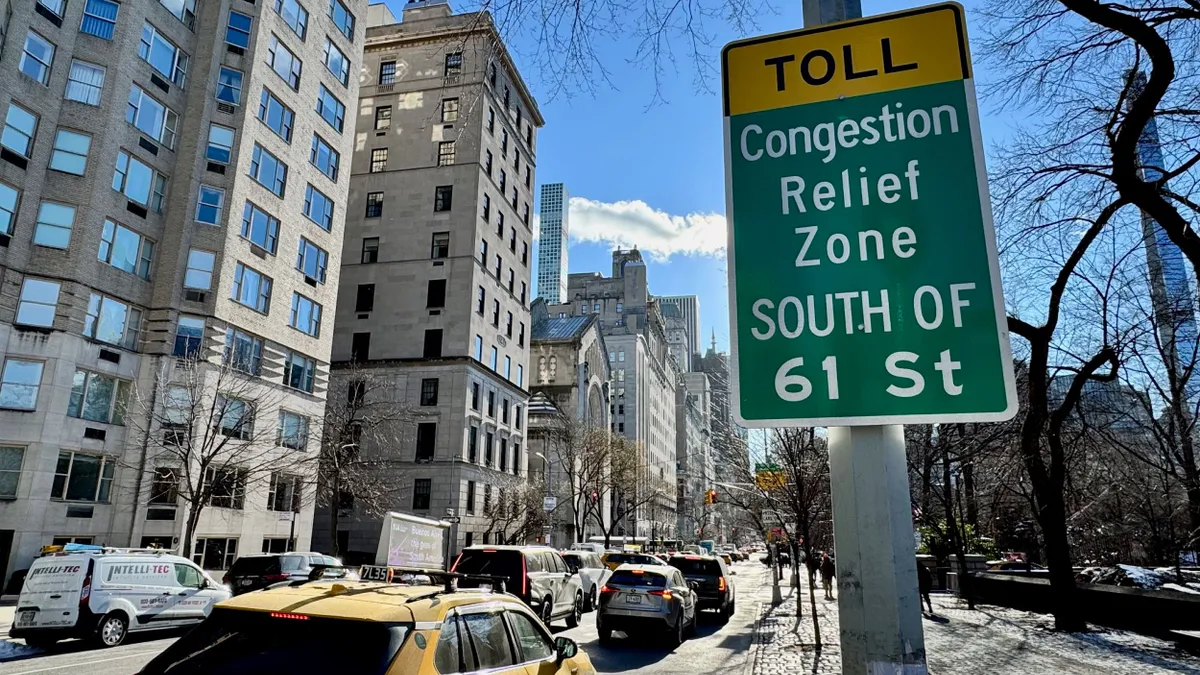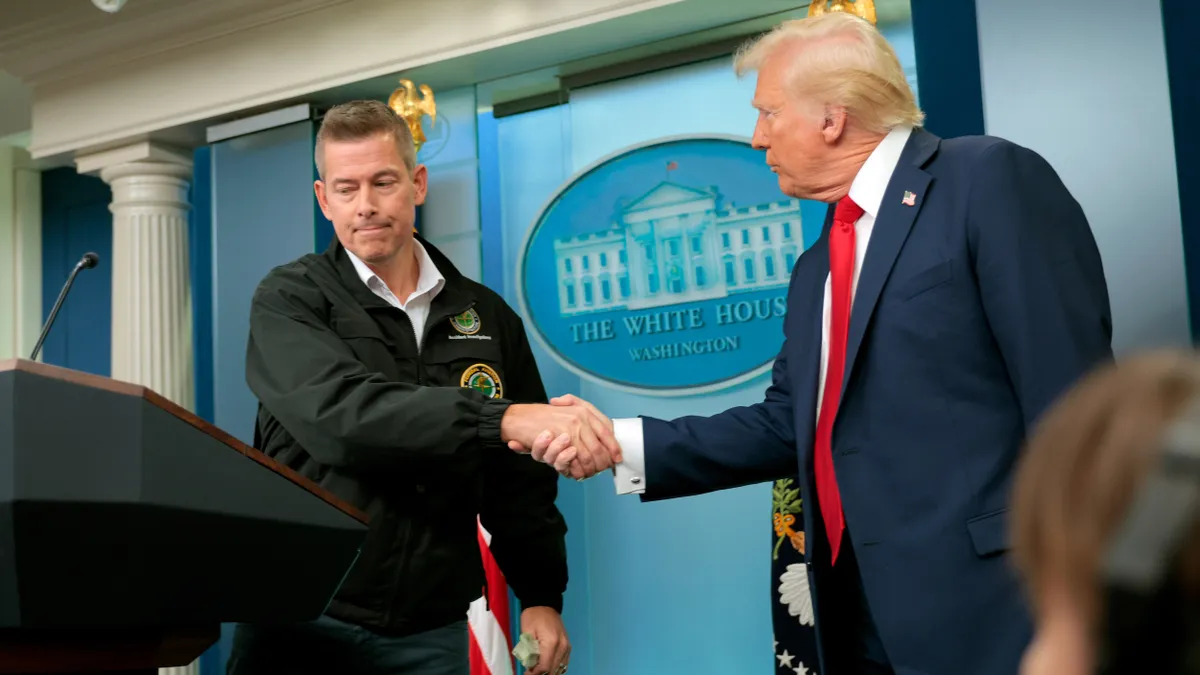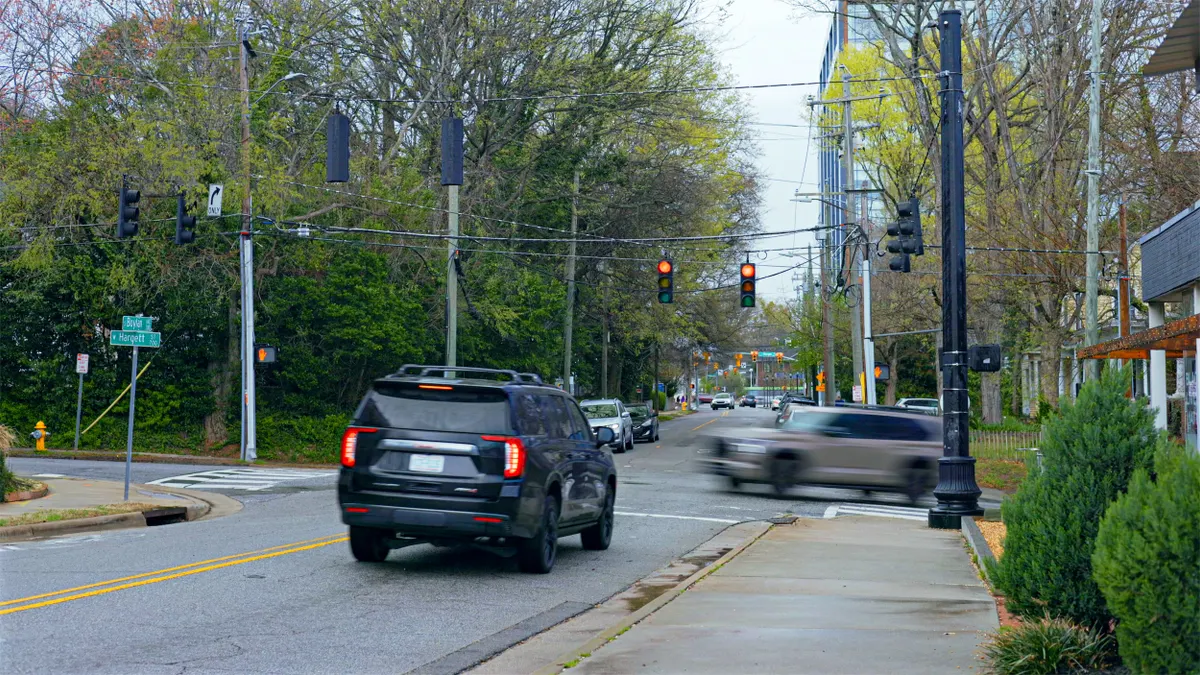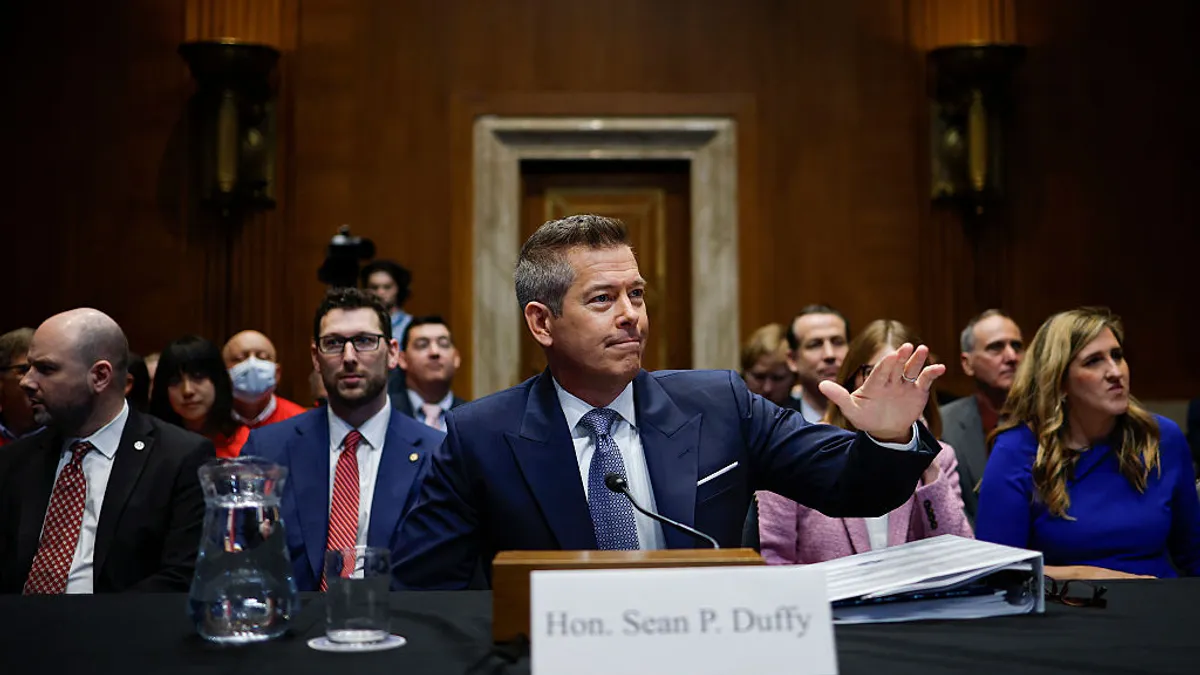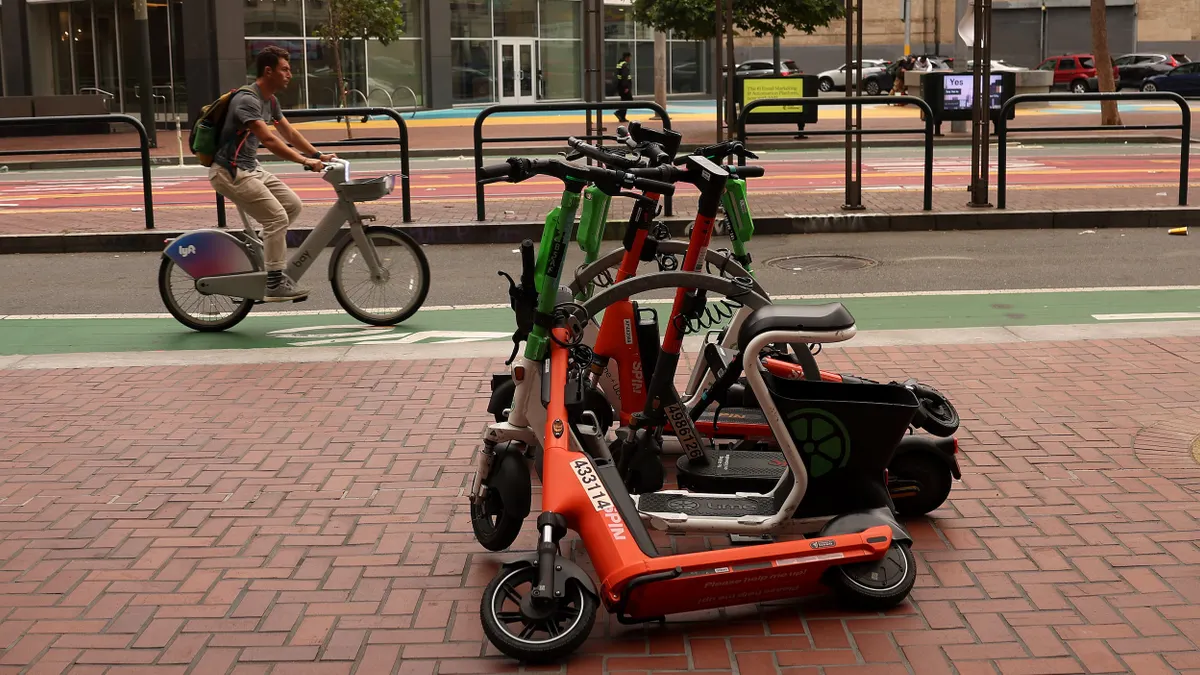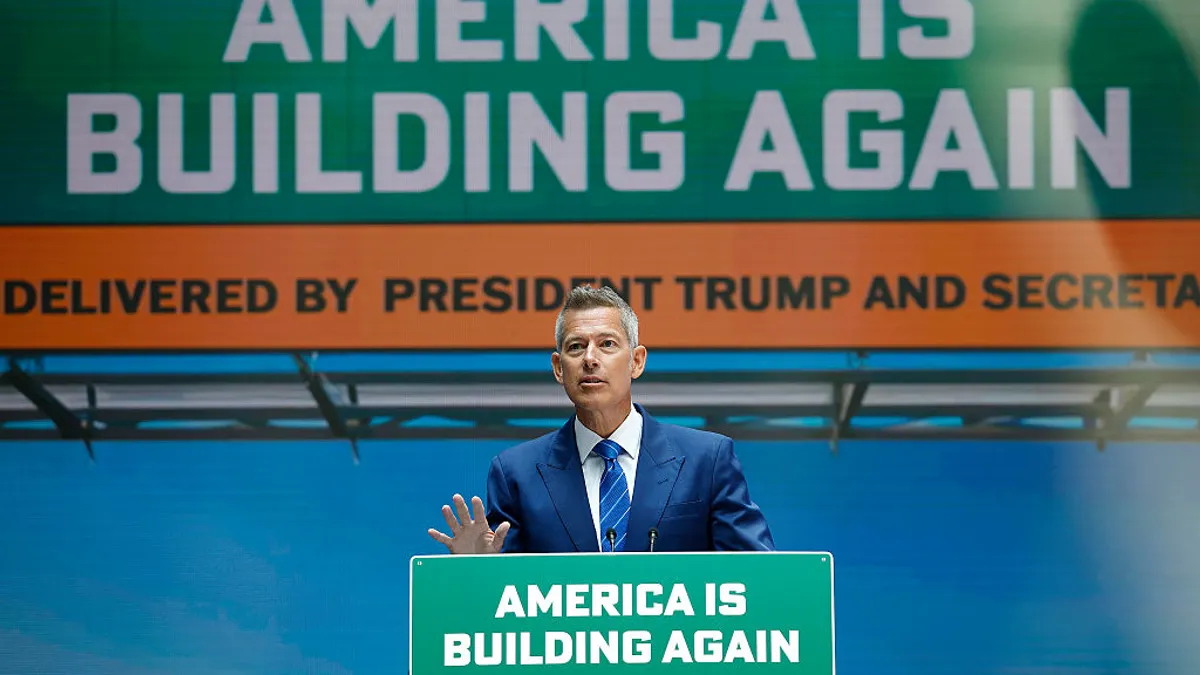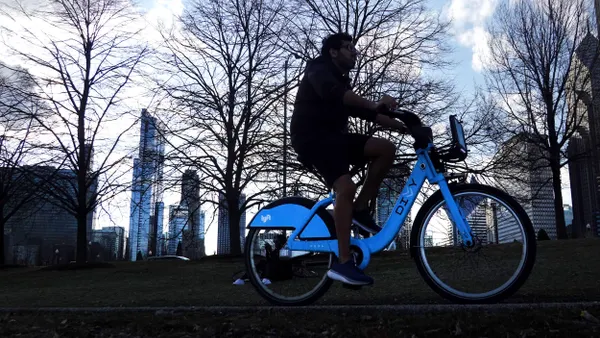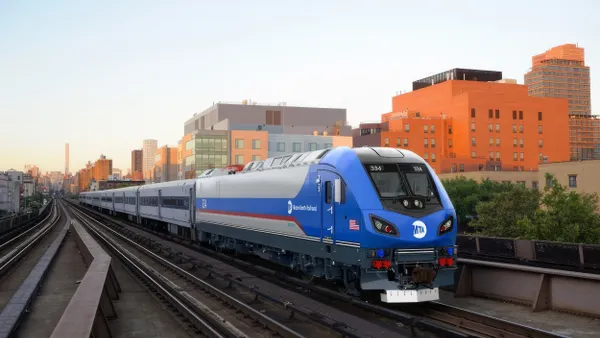Manhattan’s central business district has seen 2.8 million fewer cars since New York’s congestion pricing program went into effect Jan. 5, with 60,000 fewer cars traversing the notoriously gridlocked area daily, according to Will Carry, an assistant commissioner for policy at the New York City Department of Transportation.
“What we’re seeing is rather dramatic improvements in reductions in travel time, upwards of 10[%] to 20%,” Carry said during a March 21 webinar hosted by the Massachusetts Institute of Technology.
The congestion pricing program tolls cars $9 and trucks $14.40 to $21.60 during peak hours of 5 a.m. to 9 p.m. to enter the city’s central business district. Carry said Metropolitan Transit Authority data shows overall speeds at the zonal level “are uniformly higher,” by as much as 7.2% during weekday peak hours and by 10.2% from noon to 10 p.m. on weekends, due to the decrease in congestion.
“Our perspective is this is quite a good result, especially given that the tolls were substantially reduced — by 40% — from what they were originally intended to be,” Carry said.
Transportation engineer and former NYC Traffic Commissioner Sam Schwartz noted that subway, bus and suburban rail use is up 6% to10% since congestion pricing was implemented, and crash injuries are down 19%. Carry noted that “citywide, we are having our best year in terms of fatal crashes since 2013.”
Businesses in the area have also seen benefits, Schwartz said, with restaurant reservations rising 7% and Broadway theater ticket sales jumping 17% compared with the same period last year.
The congestion pricing measure has also met resistance, however, including from President Trump, who has pledged to end it. Numerous lawsuits have been filed since the program began, Schwartz said. Transportation Secretary Sean Duffy announced March 20 he would give New York 30 days to end the congestion pricing program and would continue “discussions” in the meantime.
Matt Daus, partner and chair of the transportation practice group at the Windels Marx law firm, said that while he’s a supporter of congestion pricing, he was critical of the program’s roll-out in the city and the fact that it did not exempt private bus lines or taxis.
“They are part of the transportation ecosystem,” Daus said. “Passengers really have paid enough. I hate to say it, but they’ve become a bit of an ATM machine for the MTA.”
Carry said some of the biggest supporters of the program so far have been taxi and ride-share drivers, however. “The drivers that are paying are getting value for that money,” he said, noting taxi rides in the area have surged since the program began.
Daus also said the city’s public transportation system was not ready to handle the change. “You can’t legitimately tell people to get out of their cars if you don’t have a public transport system that is safe, affordable and works on time,” he said.
Daus said he has reviewed legal complaints filed against the initiative. He predicted the courts will side with the MTA in those suits due to existing environmental laws. Ultimately, the outcome of the program will come down to “a congressional issue,” he said.
Daus pointed to a law that prohibits local governments from tolling roads that are “federal aid highways,” including those with federally funded improvements. Manhattan’s central business district largely consists of federal aid highways, he said, thus the Trump administration is “holding all the cards.”
“The future of the program is going to depend upon whether Trump wants to cut a deal with Hochul,” Daus said. “I think that the governor is really working on him, and if she’s savvy enough to pull this off, we might have a deal that saves congestion pricing.”
For other cities considering congestion pricing, Daus suggested they should “start slowly” and focus on improving infrastructure, cutting waste, and including taxis and private bus lines as part of the system. He also advised cities to wait and see how things play out in New York before “jumping on the bandwagon” and potentially angering the Trump administration — and potentially jeopardizing New York’s chances of success.
“I think they should wait to see how the governor works out a deal with Trump and the lessons learned from that,” Daus said. “If I was them, I would stand down. This is a battle worth fighting, but now is not the time.”


